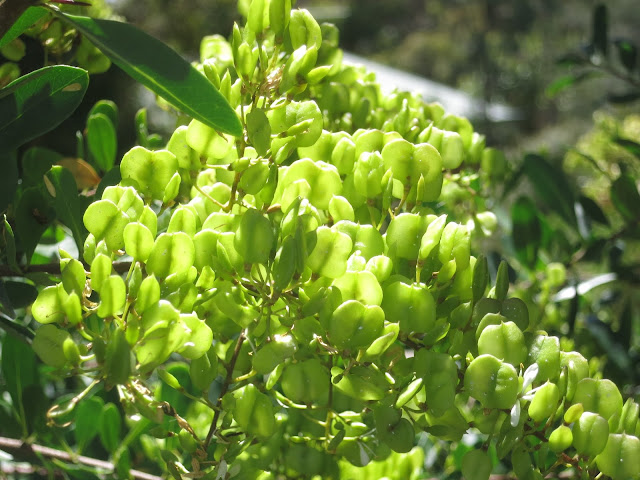The warm sunny weather has brought 'Spike' back into the garden in a never-ending quest for ants.
The ants find that nesting under the brick paving suits them because we have provided them with a firm roof over their heads, and a layer of bedding sand into which they easily tunnel for their nests.
Obviously the echidna can smell the ants underneath the bricks, and from time to time does manage to catch some on its tongue.
In recent weeks I could not help but notice that the Moonah (melaleuca lanceolata) shrubs on the cliff-tops had started to flower. The dense masses of flowers are lightly fragrant and an ivory-white.
Although in sheltered situations Moonah trees can grow to 10 metres, in the prevailing south-westerly winds the Moonah shrubs growing on the cliffs hug the ground closely forming semi-prostrate thickets.
Their branches become highly contorted into wonderous shapes.
The flowers grow in a characteristic 'bottle brush' fashion around the ends of a branchlet. They have minute petals and long whitish stamens. I found some growing on a sheltered young bush so the branches were fairly straight.
I have arranged them as an elevated mass in a suiban by the Tasmanian potter John Campbell who was active from the 1880's to the early part of the 20th century.
This arrangement meets the Sogetsu curriculum exercise of 'emphasising lines at the base' of the arrangement. I have added two 'coastal sword sedge' (lepidosperma gladiatum) leaves to provide some contrasting texture.
I thought it would be interesting to also make an arrangement using the Moonah flowers and contrast it with an old twisting branch of the same material. In this photo the branch almost disappears against the unique vase by Graeme Wilkie from Qdos gallery.
Greetings from Christopher
28th January 2017




































